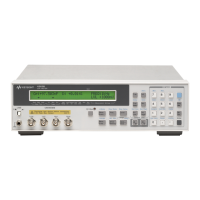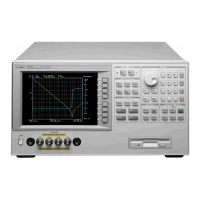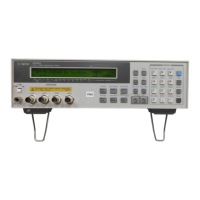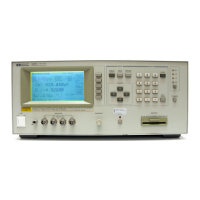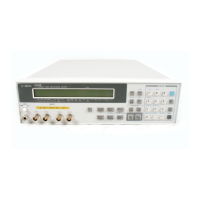4263B
GPIB
Interface
GPIB
Interface
is
used
for
remote
control
of
the
4263B
using the
General Purpose
Interface Bus
(GPIB).
GPIB
is
a
standard
for
interfacing
instruments to
computers,
and supports
for IEEE
488.1,
IEEE
788.2,
IEC-625,
and
JIS-C1901.
GPIB
allows instruments
to be
controlled by
an external
computer
which
sends
commands
or
instructions
to
and
receives
data
from the
instrument.
With
the
GPIB
system,
many
dierent
types of
devices including
instruments,
computers,
plotters
and
printers
can
be
connected
in parallel.
When conguring
an GPIB
system, the
following
restrictions
must
be
adhered
to:
The
length
of
cable
between
one
device and
another must
be less
than or
equal
to
four
meters
.
The
total
length
of
cables
in
one bus
system must
be less
than
or
equal
to
two
meters
times
the
number
of devices
connected on
the bus
(the
GPIB
controller
counts
as
one
device),
and
must
not
exceed 20
meters.
A
maximum
of
15
devices can
be connected
on one
bus
system.
There
are
no
restrictions
on
how
the
cables
are
connected
together
. However
,
it
is
recommended
that
no
more
than
four
piggyback
connectors
be stacked
together
on
any
one
device
,
or
else
the
resulting
structure
could
exert
enough
force
on
the
connectors
mounting
to
damage
it.
Every
GPIB
device
has
its
own
unique
identication
address
.
The
available
GPIB
addresses
are
the
integer
numbers
from
0
to
30.
Every
device
on
an
GPIB
bus
must
have
a
unique
address
.
All
devices
on
the
GPIB
must
be
able
to
perform
one
or
more
of
the following
interface
functions:
T
alker
When
specied
to
talk,
a
talker
transmits
device
dependent
data.
There
can
only
be
one
active
talker
in
an
GPIB
system
at
any
given
time
.
Listener
When
specied
to
listen,
a
listener
receives
device dependent
data.
There
can
be
multiple
active
listeners
in
an
GPIB
system simultaneously
.
Controller
A
controller
manages
the
bus
,
and
species talkers
and listeners
.
There
can
only
be
one
active
controller
in
an GPIB
system at
any given
time.
Table
3-5 lists
the 4263B
capability
and
functions
.
These
functions
provide
the
means
for
an
instrument to
receive,
process,
and
transmit
commands
,
data,
and
status
over
the
GPIB
bus
.
Table
3-5. GPIB
Interface Capability
Cord Function
SH1 Complete source handshake capability
AH1 Complete acceptor handshake capability
T5 Basic T
alker; Serial poll; Unaddressed if MLA; T
alk Only
L4 Basic listener; Unaddressed if MT
A; No
Listen Only
SR1 Service request capability
RL1 Remote/local capability
DC1 Device Clear capability
DT1 Device trigger capability
C0 No controller capability
E1 Drivers are open-collector
3-26 Function Reference and Technical Information
